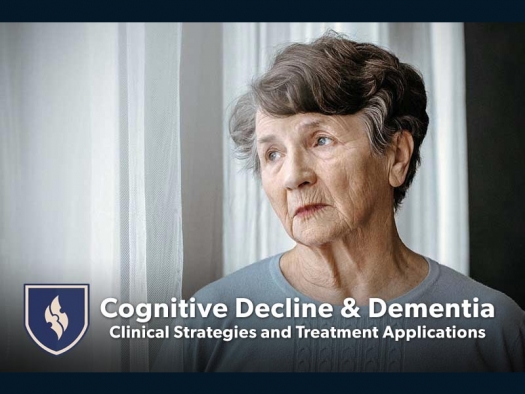Course developed and presented by Dr. Datis Kharrazian, PhD, DHSc, DC, MS, MMSc, FACN
KharrazianInstituteCognitiveDeclineAndDementia.jpg

Kharrazian Institute
Dr. Datis Kharrazian has developed a number of courses on topics ranging from inflammation, gastrointestinal strategies, autoimmunity, Hashimoto’s, diabetes, infertility, chronic fatigue, childhood developmental disorders, cardiovascular health, mood and anxiety disorders and this course, Cognitive Decline and Dementia. The beauty of Dr. Kharrazian’s teaching style enables the participant to first learn the necessary physiological processes of the body and integrate treatment applications accordingly.
Neurophysiology and neuropathology of cognition; the physiological web of cognitive decline; diet, lifestyle and risk factors that impact cognitive decline; and environmental and pathogenic risk factors of cognitive decline were introduced first. The model implicating one cause for cognitive decline has failed and a multivariate model is required focusing on the web of impacts that must be identified early. The various regions of the brain impact the function. By observing cognitive function, the brain center that is compromised becomes evident. For instance, the frontal lobe processes short term memory, while the medial temporal lobe retains events in life. The limbic system houses long term memories.
Cognitive domains include executive function, learning and memory, perceptive motor function, language and social cognition. Mild cognitive impairment includes two or more of the cognitive domains. Dementia includes two or more of the cognitive domains plus loss of daily activities.
There are several categories of cognitive decline. Alzheimer’s disease begins with short-term memory loss and difficulty multitasking. Later on, working memory and long-term memory loss occurs. Lewy Body Disease involves amyloid and tau plaques in the brain. Parkinson symptoms are common. The patient could have visual hallucinations, REM sleep disorder and fluctuation cognition. Frontal Temporal Dementia exhibits personality changes, with disinhibition. Chronic Traumatic Encephalopathy occurs after a brain injury and multiple areas of the brain can be involved. Vascular Dementia typically has an acute onset with vessel injury. Cerebellum Cognitive Affective Disorder occurs in the post, midline and anterior cerebellum with vertigo and tremors.
There is a physiological web of cognitive decline. This includes neuron bioenergetics, neuron plasticity, neurotransmission, microglia reactivity, and protein degradation activity. Neuron bioenergetics involves impaired activation of mitochondria biogenesis. Lack of oxygen, impaired processing of glucose and ketones for energy, and uncoupling impact mitochondria genesis and activation. With neuron plasticity there is a loss of neuron connectivity and regeneration of the hippocampus. Neurotransmission involves impaired neurotransmitter synthesis and release. The functions around neurotransmitter receptor sites are impacted in a negative way. Microglia reactivity involves blood-brain permeability which can result from a leaky gut and other impacts. Pathogenic microglia reactivity also is involved. Protein degradation activity happens when protein misfolding and aggregation is present. The importance of molecular chaperone (proteins that help clear out misfolded proteins) activity is accentuated as well as autophagy (clearance of tangles and misfolded proteins) and mitophagy (clearance of unhealthy mitochondria) pathways.
Lifestyle and diet are an integral part of maintaining healthy cognitive function. In a healthy individual the production of BDNF is high, inflammation is low and insulin sensitivity is appropriate. This is accomplished by eating a Mediterranean diet, healthy fats, omega 2 oils, polyphenols and antioxidants. Research has shown that people over 65 should not be too thin, have mental stimulation regularly, avoid head trauma, have blood pressure that is not too low on the diastolic side and not too high on the systolic side, avoid stress, and obtain a high level of education in their early years. All of these factors help protect against cognitive decline. Many medications put an individual at risk including anti-anxiety, anti-depressant, painkillers, beta blockers, sleep aids and anti-cholinergics. Alcohol and illicit drugs are also a risk factor. Research shows if a person abstains from alcohol or drinks more than 14 alcoholic drinks a week they are at greater risk. Chronic cannabis use can also be a risk factor, but CBD products can be beneficial.
Body Mass Index (BMI) plays a role. As one ages it is best to have an increased BMI. A fourth risk factor is a sedentary life style. With low physical activity, the brain doesn’t control blood sugars as well. Exercise, including high intensity exercise is optimal. Cognitive activities including games, word recall, chess, and other cognitive stimulation helps the hippocampus retain volume and function. Stress, as we know, causes an increase in cortisol, having a neurotoxic effect on the hippocampus. Circadian rhythms, if disrupted, are an indicator of neuro degenerative disease.
Finally, sleep is essential. Dietary habits can help protect against cognitive decline. Avoid sugar, saturated fats, fried food and high fat dairy. Instead opt for fish, fiber, plants, nuts, beans, leafy greens, fruit and high flavonoid foods. Intermittent fasting has proven effective. This approach to the timing of eating is anti-inflammatory. It involves fasting for 12 to 18 hours between meals. For example, breakfast would be at 10 am and the last meal would be eaten at 6 pm. It is helpful to limit carbs and begin to introduce ketones into the diet through medium chain triglycerides (MCT) oils. As the brain ages it can use ketones for energy more effectively than glucose. In some cases a ketogenic diet can be beneficial if there is moderate cognitive decline.
Environmental risk factors include toxic chemicals and infections agents. Triggers are bacteria, parasites, virus, mold, heavy metals, solvents, air pollution, and chemicals. Infectious agents can enter the brain if there is a blood-brain barrier breach. Chemicals can impact the brain through the same pathway. There are various ways to detox the body including chelation (which must be used with caution depending on the patient), and nutraceuticals. Oral and IV glutathione and other antioxidants can help reduce the chemical load. It is important to maintain a healthy blood-brain barrier. BDNF helps the neurons grow. The omega oil DHA is vital. MCT oil converts to ketones rapidly and is a great energy source. Micronutrients including Vitamin D and the B vitamins, as well as the flavonoids play a very important role in addressing oxidative stress pathways. In fact, coffee is high in flavonoids and the caffeine increases blood flow and focus. Coffee with MCT oil can be consumed in the morning and does not interfere with the implementation of the intermittent fasting diet. Botanicals can also be effective. Huperzine A is very effective for enhancing memory. Bacopa, gingko biloba, ginger, garlic and germander are beneficial.
Dr. Kharrazian reviewed the various forms and questionnaires that can be used to evaluate patients. These help determine the degree of cognitive decline, the region of the brain impacted, and the type of dementia. In addition to the questionnaires the practitioner should do an initial clinical survey of the patient, take a medical history, do a physical exam, and do appropriate labs. After gathering all of the information, a personal approach for treatment can be developed. It is important to determine expectations to share with the patient and the family. From there a clinical priority is developed beginning with optimizing fuel for the mitochondria, reducing mitochondrial uncoupling and neuro-inflammation, increasing BDNF for nerve growth and function, activate plasticity and promote autophagy and mitophagy. At that point the chemical burden can be reduced and intermittent fasting can be introduced.
Cognitive decline is a complicated process and it is important to realize that treatment must be personalized taking into account all aspects of the patient. By using all of the principles that Dr. Kharrazian outlines in this course it is possible to help patients achieve the most optimal outcomes.
For more information regarding this course and the other courses that Dr. Kharrazian offers go to the Kharrazian Institute website.



